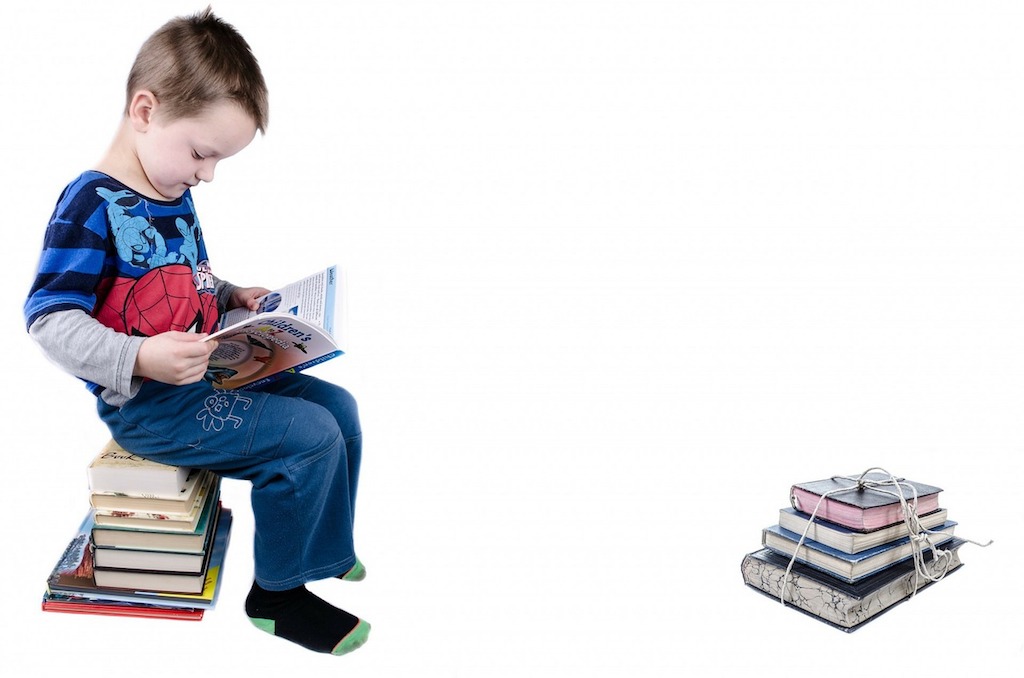SingaporeMotherhood | Preschooler & Up
December 2016
5 Ways to Help Children with Autism Read Better

I remember when my wife and I found out our son had autism. We went through what most parents who discover this disorder in their child go through: guilt (that somehow it was our fault), fear (that he would not be able to cope) and well… mostly just worry. We managed to get help from EIPIC (Early Intervention Program for Infants and Children), and thankfully he is much better today.
My wife works from home, which is another big boon. She practices reading with our son, while I just read him bedtime stories. She did quite a bit of research on helping our son adapt and cope, especially with reading. I’ll be sharing five useful tips you can put into practice at home to help your children with autism read better.
There is no best age to start. If you are going to read to you child, you can start any time, as early as when your child is two or three years old. From the time your child is around five years of age, he should be able to read simple books with you. To start with, try Dr. Seuss books like The Cat in the Hat. Dr. Seuss books have lots of repetition of common words, rhymes, and very funny graphics and storylines which children love.
(See also: My Child has Autism. Now What?)
1. Pick Books that Interest Them
Children with autism are usually fixated on something, from trains, to maps, even to anything with grills (I kid you not). My son, for example, is obsessed with trains, especially our MRT trains. Pick books that feature your child’s fixations, if possible. Also, most children with autism are visual learners. They remember a word better if it’s attached to a picture, so they can form a picture in their mind representing the word or words.
2. Pick Books with Common Sight Words and Rhyming Words
Common sight words are very important for new readers. Learning them, being able to recognise them and reading them out loud gives the children a confidence boost. This will also be a pre-requisite when they get into Primary 1 (if like us, you intend to let yours go to a mainstream school). Rhymes and rhyming words provide cadence, rhythm and fun! Some kids respond better when the story is read in a sing-song manner to them.
3. Regulate Sensory Input
Create a quiet, peaceful and comfortable reading space at home. Children with autism react differently to loud sounds, flashing lights and discomfort. They find it tougher to filter out extraneous sensory information. These could be things like other children playing loudly around them, a dog barking, or the flickering TV screen. This over- or under-sensitivity can make it very difficult for autistic children to focus on tasks, including reading. Some children may learn better when they are moving. Reading on a patio swing, or a rocking chair, can help them focus better.
(See also: 14 Life-Changing Tips for Parents who are Struggling with a Child with Autism)
4. Read Interactively
When I read to my son, I like to act out the story, sometimes with just my voice, sometimes with props and actions. Get your kids to imitate what the story characters are doing. Give them simple props to act out scenes from the book. Get them to help turn the page at the right moment, or point to words as you read. All these activities help engage children as readers, without relying on their proficiency as a reader.
5. Every Child is Different
Autism is a spectrum of disorders, and every child who is diagnosed with this condition learns in his or her own unique way. What works for one child may not work for another. What you should always try to do, however, is to make use of and focus on your child’s strengths, and eliminate or overcome your child’s challenges as much as possible. Try different methods, keep a record, and once you’ve found a combination that works, fine tune it. Make it fun, interactive and progressive. This will take time, patience, and lots of love, but you will eventually see a difference, as I have in my son.
(See also: An Open Letter from a Parent of a Child with Autism)
All content from this article, including images, cannot be reproduced without credits or written permission from SingaporeMotherhood.
Follow us on Facebook, Instagram, and Telegram for the latest article and promotion updates.







